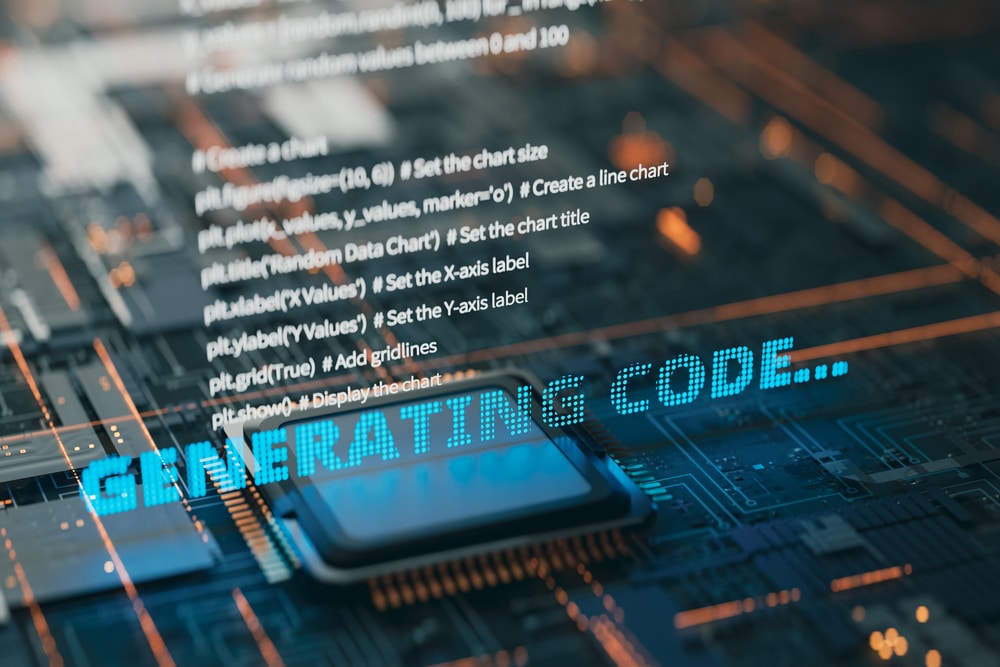
How software engineering can tackle performance challenges [Q&A]
Software engineering organizations often grapple with challenges that hinder their output -- including productivity blind spots, duplicate work, deadlines that don't stand a chance, burnout, and other hidden costs that eat up time and energy.
And while metrics can signal a problem, they don't always uncover the root cause or -- more importantly -- how to fix it. To explore this, we spoke to Joe Levy, CEO of Uplevel, an engineering optimization system helping developers independently measure the ROI of AI adoption.

AI won't replace low-code/no-code tools
According to a new study, 76 percent of tech leaders say that AI will make their existing low-code/no-code tools more efficient instead of replacing them altogether.
The survey from App Builder, with third-party research firm Dynata, finds use of low-code and no-code tools have steadily increased over the past decade and become an integral piece of how 95 percent of teams now build scalable applications.

Software supply chain threats increase in the AI era
Managing and securing the software supply chain end-to-end is vital for delivering trusted software releases.
But a new report from JFrog finds emerging software security threats, evolving DevOps risks and best practices, and potentially explosive security concerns in the AI era.

70 percent of organizations are developing AI apps
Over 70 percent of developers and quality assurance professionals responding to a new survey say their organization is currently developing AI applications and features, with 55 percent stating that chatbots and customer support tools are the main AI-powered solutions being built.
The research from Applause surveyed over 4,400 independent software developers, QA professionals and consumers explored common AI use cases, tools and challenges, as well as user experiences and preferences.

Simplifying blockchain implementation for developers [Q&A]
Blockchain technology has often been touted as a game changer for the security of transactions in different fields.
However, many organizations still don't full appreciate its value or how to incorporate it into their applications. We spoke to Lee Jacobson, senior vice president business development Web3 at video game commerce company Xsolla to find out about how blockchain implementation can be made easier.

Security, privacy and AI code reliability are the biggest development challenges
The latest Reveal survey from Infragistics into development concerns shows security (51 percent), AI code reliability (45 percent), and data privacy (41 percent) among their biggest software development challenges for 2025.
AI continues to be a major focus, with 73 percent of tech leaders citing expanding the use of AI within organizations as their top priority for 2025.

Enterprises set to waste billions due to lack of cloud cost awareness among developers
A disconnect between FinOps and development teams is leading to wasted spend on cloud infrastructure costs according to 52 percent of engineering leaders.
Research from software delivery platform Harness finds developers have limited insight into cloud waste. Fewer than half of respondents say they have access to real time data on idle cloud resources (43 percent), unused or orphaned resources (39 percent), and over or under-provisioned workloads (33 percent).

AI code assistants speed up development but add to risks
New research from Apiiro shows that while AI code assistants are accelerating development times they're also increasing risks.
AI code assistants have seen rapid adoption since the launch of ChatGPT in November 2022. Microsoft reports that more than 150 million developers now use GitHub Copilot, up 50 percent over the past two years.

99 percent of organizations experience API security issues
A surge in API adoption, driven by the need for organizations to modernize infrastructures and unlock new revenue streams, is contributing to the rise in API security risk according to a new report.
The study from Salt Security finds 99 percent of respondents encountered API security issues within the past 12 months and 55 percent slowed the rollout of a new application due to API security concerns.

86 percent of commercial codebases expose organizations to risk
Analysis of 965 commercial codebases across 16 industries during 2024 by Black Duck Software finds 86 percent contain open source software vulnerabilities and 81 percent high- or critical-risk vulnerabilities.
Black Duck's Open Source Security and Risk Analysis (OSSRA) report also shows that the number of open source files in an average application has tripled from around 5,300 in 2020 to more than 16,000 in 2024.

Incorporating 'secure by design' into the software supply chain [Q&A]
Developers historically have not been all that security savvy, but as software supply chain security becomes a larger and larger problem every day, enterprises are going to need to secure packages before they are put into production environments.
We spoke to Phylum CEO, Aaron Bray, to learn more about 'secure by design' and how it can make sure developers are being taught security as part of their development and training process and are also being provided with the necessary resources to code securely from the beginning.

Enterprises consider ditching Oracle Java over cost worries
The percentage of organizations considering alternatives to Oracle Java has jumped significantly from 72 percent in 2023 to 88 percent today.
The Azul 2025 State of Java Survey and Report finds 99 percent of enterprises are using Java. The top reasons given for considering a migration away from Oracle Java include cost (42 percent), preference for open-source (40 percent), Oracle sales tactics (37 percent), uncertainty created by ongoing changes to pricing and licensing (36 percent), and restrictive Oracle policies (33 percent).

New AI assistant aims to streamline cross-platform UI development
Repetitive UI development tasks often don't involve coding and in order to free up developer time from these, Qt Group is launching Qt AI Assistant, an experimental tool for streamlining cross-platform user interface (UI) development.
It gives advice on building application UIs with Qt Framework and automates manual tasks like writing unit test cases, code documentation, and repetitive code. Users request this advice with a prompt window and quick-access commands inside the code editor of Qt Creator (used for creating and modifying cross-platform apps).

Microsoft increases its focus on artificial intelligence by creating a new CoreAI team
Microsoft continues to bet big on AI and the company has created a new artificial intelligence engineering division called CoreAI. The new development-focused unit is headed by Jay Parikh -- once Meta's VP and global head of engineering -- and the intention is to speed up AI infrastructure and software development at Microsoft.
CEO Satya Nadella describes 2025 as being "about model-forward applications that reshape all application categories". Nadella clearly wants to power forward in what he says is the "next innings of this AI platform shift".

Why GraphQL is a serious alternative to the REST API [Q&A]
GraphQL -- in case you haven't heard of it -- is a rapidly rising query and manipulation language for APIs. It's designed to make APIs fast, flexible and developer-friendly, and it moves the complexity of data fetching from the client to the server side.
We spoke to Pete Crocker, director of solutions engineering at OpsMill, to learn why it's increasingly being employed as an alternative to the more established REST API.
